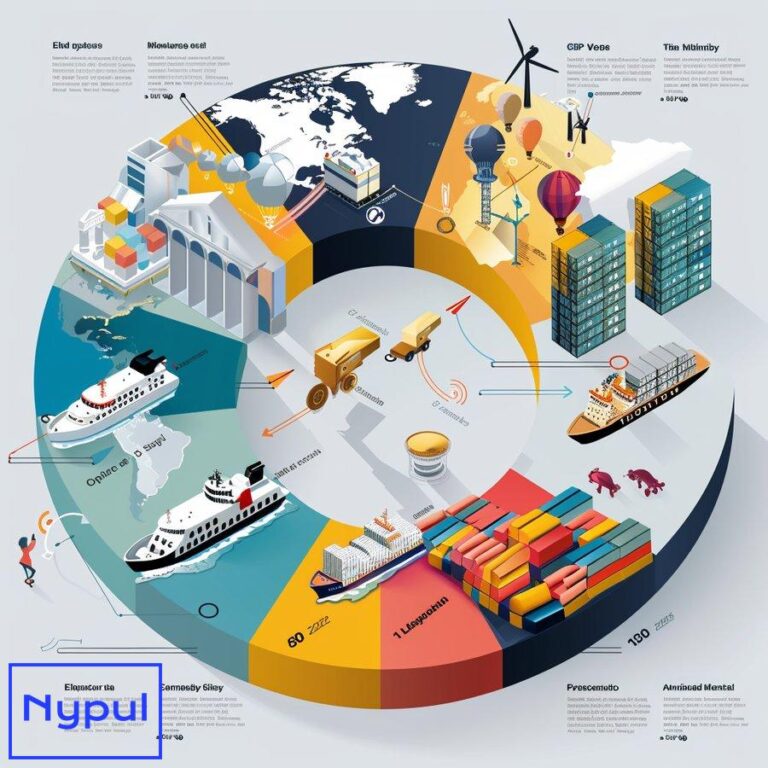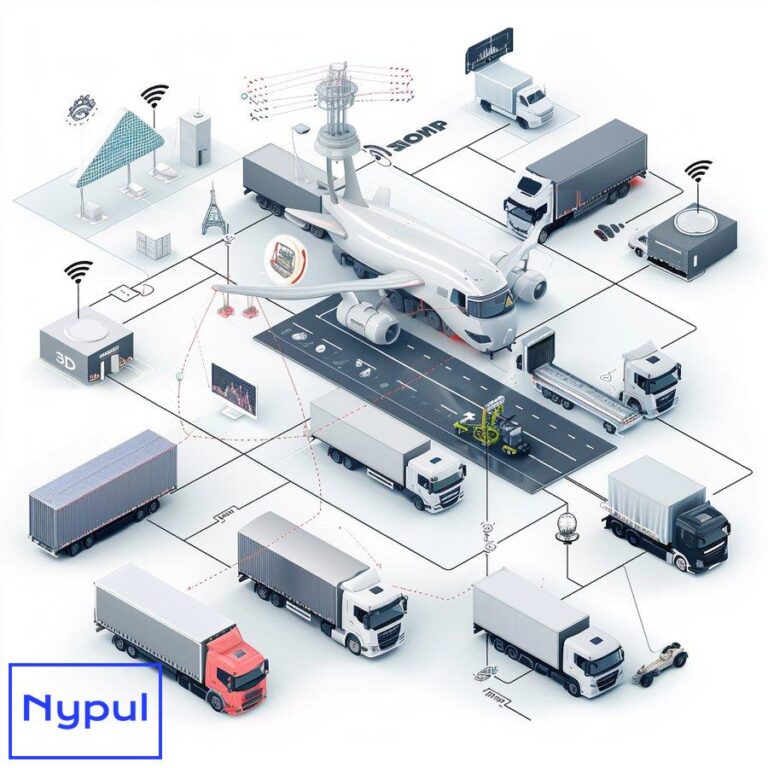What Is the Main Function of Telematics
What is telematics and how does it work?
Telematics represents a convergence of telecommunications and informatics, serving as a pivotal technology in modern logistics and fleet management. This innovative system combines GPS technology, onboard vehicle diagnostics, and wireless communication to transmit real-time data about vehicle location, performance, and driver behavior.
At its core, telematics operates through a device installed in a vehicle, often referred to as a “black box” or telematics control unit (TCU). This device connects to the vehicle’s onboard diagnostics port (OBD-II), allowing it to access and collect data from various vehicle systems. The TCU is equipped with a GPS receiver, cellular modem, and sometimes accelerometers or other sensors.
Data Collection
The telematics device continuously gathers a wide array of information, including:
- Vehicle location and movement
- Speed and acceleration
- Fuel consumption
- Engine performance metrics
- Tire pressure
- Battery health
- Driver behavior (harsh braking, rapid acceleration, etc.)
Data Transmission
Once collected, this data is transmitted via cellular networks to a central server or cloud-based platform. The transmission occurs in real-time or at predetermined intervals, depending on the specific telematics solution and user requirements.
Data Processing and Analysis
Upon reaching the server, the raw data undergoes processing and analysis. Advanced algorithms and machine learning techniques are often employed to extract meaningful insights from the vast amount of information received.
User Interface and Reporting
The processed data is then presented to users through web-based dashboards or mobile applications. These interfaces provide fleet managers and other stakeholders with actionable insights, reports, and alerts, enabling informed decision-making and proactive fleet management.
Telematics systems can be broadly categorized into two types:
Embedded Systems: These are built into the vehicle during manufacturing, offering seamless integration with the vehicle’s systems.
Aftermarket Systems: These are installed post-purchase and can be easily retrofitted to existing vehicles, providing flexibility for fleet managers.
The functionality of telematics extends beyond simple tracking. Modern systems offer a range of features, including:
Geofencing: Virtual boundaries can be set up, triggering alerts when vehicles enter or exit designated areas.
Route Optimization: Telematics data can be used to analyze and improve route efficiency, reducing fuel consumption and delivery times.
Predictive Maintenance: By monitoring vehicle health metrics, telematics can predict potential issues before they lead to breakdowns, allowing for proactive maintenance.
Driver Scoring: Systems can evaluate driver behavior, promoting safer driving practices and potentially reducing insurance premiums.
Fuel Management: Detailed fuel consumption data helps identify inefficiencies and opportunities for cost savings.
The impact of telematics on the logistics and transportation industry has been transformative. By providing unprecedented visibility into fleet operations, telematics enables companies to optimize their resources, improve safety, reduce costs, and enhance customer service.
As the technology continues to evolve, integrating with other emerging technologies like artificial intelligence and the Internet of Things, the potential applications and benefits of telematics are expected to expand further, cementing its role as a cornerstone of modern fleet management and logistics operations.
How did telematics evolve over time?
The evolution of telematics is a testament to the rapid advancement of technology in the transportation and logistics sectors. From its humble beginnings to its current status as an indispensable tool in fleet management, telematics has undergone significant transformations.
Early Foundations (1960s-1970s)
The roots of telematics can be traced back to the 1960s when the U.S. Department of Defense developed the Global Positioning System (GPS). While not initially available for civilian use, GPS laid the groundwork for future telematics applications.
During the 1970s, the concept of machine-to-machine (M2M) communication began to take shape. This early form of telematics involved rudimentary data transmission between devices, primarily for industrial applications.
Emergence of Vehicle Tracking (1980s)
The 1980s saw the first commercial applications of vehicle tracking systems. These early systems were primarily used by trucking companies to monitor the location of their fleets. However, they were expensive, bulky, and limited in functionality.
Cellular Revolution (1990s)
The widespread adoption of cellular networks in the 1990s marked a significant turning point for telematics. The ability to transmit data over cellular networks dramatically improved the reliability and reduced the cost of vehicle tracking systems.
In 1996, the U.S. government mandated the use of On-Board Diagnostics II (OBD-II) ports in all new vehicles. This standardization paved the way for more sophisticated telematics devices that could access a wealth of vehicle data.
Internet Era and Data Integration (2000s)
The early 2000s saw the integration of telematics with internet technologies. Web-based interfaces allowed fleet managers to access real-time data and reports from anywhere with an internet connection.
During this period, telematics systems began to incorporate a wider range of data points beyond simple location tracking. Fuel consumption, engine performance, and driver behavior metrics became standard features.
Smartphone Integration and Cloud Computing (2010s)
The proliferation of smartphones in the 2010s brought about another revolution in telematics. Mobile apps allowed drivers and fleet managers to access telematics data on the go, enhancing real-time decision-making capabilities.
Cloud computing technologies enabled more sophisticated data analysis and storage capabilities. This allowed for the processing of vast amounts of data, leading to more accurate predictive maintenance and route optimization algorithms.
Advanced Analytics and AI Integration (2020s and Beyond)
The current decade has seen telematics systems leveraging advanced analytics and artificial intelligence to provide even more value. Machine learning algorithms can now predict maintenance needs with high accuracy, optimize routes in real-time based on traffic and weather conditions, and provide detailed insights into driver behavior and safety.
The integration of telematics with other emerging technologies is shaping its future evolution:
Internet of Things (IoT): Telematics is becoming a key component of the broader IoT ecosystem, enabling vehicles to communicate not just with central servers, but with other vehicles and infrastructure.
5G Networks: The rollout of 5G networks promises to dramatically increase the speed and volume of data transmission, enabling even more real-time applications of telematics.
Autonomous Vehicles: As self-driving technology advances, telematics will play a crucial role in monitoring and managing autonomous fleets.
Blockchain: Some companies are exploring the use of blockchain technology to enhance the security and transparency of telematics data.
The evolution of telematics can be summarized in the following table:
| Era | Key Developments | Primary Applications |
|---|---|---|
| 1960s-1970s | GPS development, M2M communication | Military and industrial use |
| 1980s | First commercial vehicle tracking systems | Basic fleet location monitoring |
| 1990s | Cellular networks, OBD-II standardization | Improved vehicle tracking, basic diagnostics |
| 2000s | Internet integration, expanded data collection | Web-based fleet management, fuel monitoring |
| 2010s | Smartphone apps, cloud computing | Mobile access, advanced data analysis |
| 2020s and beyond | AI integration, IoT connectivity | Predictive maintenance, autonomous fleet management |
As telematics continues to evolve, it is becoming increasingly integrated with other business systems, such as enterprise resource planning (ERP) and customer relationship management (CRM) platforms. This integration allows for a more holistic approach to business operations, where vehicle and driver data can inform and optimize broader business processes.
The future of telematics promises even greater levels of automation and intelligence. As vehicles become more connected and autonomous, telematics will play a crucial role in managing and optimizing these complex systems, further revolutionizing the transportation and logistics industries.
What are the core functions of telematics in logistics?
Telematics plays a pivotal role in modern logistics operations, offering a suite of core functions that enhance efficiency, safety, and decision-making processes. These functions form the backbone of telematics systems, providing logistics companies with the tools they need to optimize their operations in an increasingly competitive and complex environment.
Real-Time Vehicle Tracking
At the heart of telematics lies its ability to provide real-time vehicle tracking. This function allows logistics companies to:
- Monitor the exact location of each vehicle in their fleet
- Track vehicle movements and routes
- Estimate accurate arrival times for deliveries
- Respond quickly to unexpected events or delays
Real-time tracking enables better coordination of fleet resources and improves communication with customers, enhancing overall service quality.
Route Optimization
Telematics systems analyze various data points to optimize routes, considering factors such as:
- Traffic conditions
- Weather forecasts
- Vehicle capacity
- Delivery time windows
- Driver hours of service
By optimizing routes, companies can reduce fuel consumption, minimize delivery times, and increase the number of deliveries per vehicle, leading to significant cost savings and improved customer satisfaction.
Vehicle Diagnostics and Maintenance
Telematics devices connect to a vehicle’s onboard diagnostics system, providing valuable insights into its health and performance. This function enables:
- Real-time monitoring of engine performance
- Early detection of potential mechanical issues
- Scheduling of preventive maintenance
- Reduction of unexpected breakdowns and associated costs
By facilitating proactive maintenance, telematics helps extend vehicle lifespan and minimize downtime, crucial factors in maintaining an efficient logistics operation.
Fuel Management
Fuel costs represent a significant portion of operational expenses in logistics. Telematics aids in fuel management by:
- Monitoring fuel consumption in real-time
- Identifying fuel-inefficient driving behaviors
- Detecting unauthorized fuel usage or theft
- Optimizing routes to reduce overall fuel consumption
These insights allow companies to implement targeted strategies for reducing fuel costs and improving overall fleet efficiency.
Driver Behavior Monitoring
Telematics systems track various aspects of driver behavior, including:
- Speeding
- Harsh braking and acceleration
- Excessive idling
- Seatbelt usage
- Hours of service compliance
By monitoring these factors, companies can:
- Improve road safety
- Reduce accident rates and associated costs
- Implement driver training programs
- Ensure compliance with regulations
Asset Utilization and Capacity Management
Telematics provides valuable data on how assets are being utilized, allowing logistics companies to:
- Optimize fleet size and composition
- Identify underutilized vehicles
- Balance workloads across the fleet
- Make informed decisions about vehicle acquisitions or retirements
This function helps companies maximize the return on their vehicle investments and ensure that their fleet capacity aligns with operational needs.
Compliance and Regulatory Reporting
Many logistics companies must adhere to strict regulatory requirements. Telematics assists in compliance by:
- Automatically logging driver hours of service
- Tracking and reporting on vehicle inspections
- Providing data for electronic logging devices (ELDs)
- Generating reports for regulatory audits
This automation reduces the administrative burden on drivers and back-office staff while ensuring accurate and timely compliance reporting.
Security and Theft Prevention
Telematics systems enhance the security of vehicles and cargo through:
- Real-time alerts for unauthorized vehicle use
- Geofencing to detect vehicles leaving designated areas
- Remote vehicle immobilization capabilities
- Tracking of stolen vehicles for quick recovery
These features help protect valuable assets and reduce the risk of theft-related losses.
Integration with Other Business Systems
Modern telematics solutions often integrate with other business systems, such as:
- Enterprise Resource Planning (ERP) systems
- Warehouse Management Systems (WMS)
- Customer Relationship Management (CRM) platforms
- Transportation Management Systems (TMS)
This integration allows for seamless data flow between different parts of the business, enabling more holistic decision-making and operational optimization.
Data Analytics and Reporting
Telematics systems generate vast amounts of data. The ability to analyze this data and generate actionable insights is a crucial function, enabling:
- Performance benchmarking
- Trend analysis
- Predictive modeling
- Custom reporting for different stakeholders
These analytics capabilities help logistics companies make data-driven decisions and continuously improve their operations.
The core functions of telematics in logistics can be summarized in the following table:
| Function | Key Benefits |
|---|---|
| Real-Time Vehicle Tracking | Improved coordination, accurate ETAs |
| Route Optimization | Reduced fuel costs, increased deliveries |
| Vehicle Diagnostics | Proactive maintenance, reduced downtime |
| Fuel Management | Cost savings, theft prevention |
| Driver Behavior Monitoring | Enhanced safety, regulatory compliance |
| Asset Utilization | Optimized fleet size, balanced workloads |
| Compliance Reporting | Automated logging, reduced administrative burden |
| Security and Theft Prevention | Asset protection, quick theft recovery |
| System Integration | Holistic operational view, improved decision-making |
| Data Analytics | Actionable insights, continuous improvement |
These core functions of telematics work in concert to provide logistics companies with unprecedented visibility and control over their operations. By leveraging these capabilities, companies can optimize their processes, reduce costs, improve safety, and enhance customer satisfaction. As telematics technology continues to evolve, these functions are likely to become even more sophisticated, further cementing the role of telematics as an indispensable tool in modern logistics management.
What benefits does telematics offer to fleet management?

Telematics technology has revolutionized fleet management, offering a wide array of benefits that enhance operational efficiency, safety, and profitability. These advantages have made telematics an indispensable tool for fleet managers across various industries. Let’s explore the key benefits in detail:
Cost Reduction
One of the most significant benefits of telematics is its ability to help fleet managers reduce operational costs:
-
Fuel Savings: By monitoring driving behaviors and optimizing routes, telematics can significantly reduce fuel consumption. Idle time reduction and efficient routing contribute to substantial fuel cost savings.
-
Maintenance Optimization: Predictive maintenance alerts help prevent major breakdowns, reducing repair costs and vehicle downtime. Regular maintenance scheduling based on actual vehicle usage rather than arbitrary time intervals can extend vehicle lifespan and reduce overall maintenance expenses.
-
Insurance Premium Reduction: Many insurance companies offer discounts for fleets using telematics, as it demonstrates a commitment to safety and risk reduction.
-
Theft Prevention: Real-time tracking and geofencing capabilities help prevent vehicle theft or unauthorized use, potentially saving thousands in replacement costs and lost productivity.
Improved Productivity and Efficiency
Telematics systems provide tools to streamline operations and boost productivity:
-
Route Optimization: Advanced algorithms can calculate the most efficient routes, considering factors like traffic, weather, and delivery windows. This optimization leads to more deliveries per day and improved on-time performance.
-
Real-Time Dispatch: Fleet managers can make informed decisions about vehicle allocation based on real-time location data, improving response times and customer service.
-
Automated Reporting: Telematics systems generate comprehensive reports automatically, reducing administrative workload and providing actionable insights more quickly.
-
Asset Utilization: By tracking vehicle usage patterns, managers can identify underutilized assets and optimize fleet size, potentially reducing capital expenditures on unnecessary vehicles.
Enhanced Safety
Safety is a paramount concern in fleet management, and telematics offers several features to improve driver and vehicle safety:
-
Driver Behavior Monitoring: Telematics systems can track speeding, harsh braking, rapid acceleration, and other risky behaviors. This data can be used to implement targeted training programs and incentivize safe driving practices.
-
Fatigue Management: By monitoring driving hours and patterns, telematics can help prevent driver fatigue, a major cause of accidents.
-
Proactive Maintenance: Early detection of vehicle issues through diagnostic data can prevent breakdowns and accidents caused by mechanical failures.
-
Emergency Response: In the event of an accident, telematics can provide immediate notification and precise location information, enabling faster emergency response.
Improved Customer Service
Telematics enables fleet managers to provide better service to their customers:
-
Accurate ETAs: Real-time tracking allows for more precise estimated arrival times, which can be communicated to customers.
-
Proof of Service: GPS data can provide irrefutable proof of service delivery, reducing disputes and improving customer trust.
-
Faster Response Times: With real-time vehicle location data, the nearest available vehicle can be quickly dispatched to meet customer needs.
-
Transparency: Some companies offer customers limited access to tracking information, providing transparency and reducing the need for status update calls.
Regulatory Compliance
Telematics simplifies compliance with various regulations:
-
Hours of Service (HOS) Tracking: Automated logging of driver hours ensures compliance with HOS regulations and reduces the risk of violations.
-
Electronic Logging Device (ELD) Mandate: Many telematics systems include ELD functionality, helping fleets comply with mandatory electronic logging requirements.
-
Fuel Tax Reporting: Accurate mileage tracking simplifies the process of filing International Fuel Tax Agreement (IFTA) reports.
-
Vehicle Inspections: Some telematics systems include digital vehicle inspection reports, ensuring compliance with required pre- and post-trip inspections.
Environmental Impact Reduction
Telematics can help fleets reduce their environmental footprint:
-
Fuel Efficiency: By optimizing routes and reducing idle time, telematics helps decrease fuel consumption and, consequently, carbon emissions.
-
Eco-Driving: Monitoring and encouraging fuel-efficient driving behaviors can lead to significant reductions in a fleet’s overall emissions.
-
Green Fleet Management: Telematics dataEnvironmental Impact Reduction
Telematics can help fleets reduce their environmental footprint:
-
Fuel Efficiency: By optimizing routes and reducing idle time, telematics helps decrease fuel consumption and, consequently, carbon emissions.
-
Eco-Driving: Monitoring and encouraging fuel-efficient driving behaviors can lead to significant reductions in a fleet’s overall emissions.
-
Green Fleet Management: Telematics data can assist companies in transitioning to more sustainable practices, such as adopting electric or hybrid vehicles based on usage patterns and operational needs.
Data-Driven Decision Making
Telematics provides fleet managers with a wealth of data that can inform strategic decisions:
-
Performance Metrics: Access to real-time and historical data allows managers to analyze vehicle performance, driver behavior, and operational efficiency.
-
Trend Analysis: By examining trends over time, companies can identify areas for improvement, adjust strategies, and make informed decisions about fleet expansion or reduction.
-
Benchmarking: Telemetrics enables companies to compare their performance against industry standards or competitors, fostering a culture of continuous improvement.
Scalability and Flexibility
Telematics systems are designed to scale with business growth:
-
Adaptable Solutions: Many telematics providers offer modular solutions that allow companies to add features or devices as their needs evolve.
-
Multi-Vehicle Management: Fleet managers can easily manage large fleets across multiple locations through centralized dashboards, improving oversight and control.
-
Integration Capabilities: Telematics solutions can integrate with existing business systems (like ERP or TMS), allowing for seamless data flow and enhanced operational efficiency.
The benefits of telematics in fleet management can be summarized in the following table:
| Benefit | Description |
|---|---|
| Cost Reduction | Decreased fuel costs, maintenance expenses, and insurance premiums. |
| Improved Productivity | Enhanced routing, real-time dispatching, and automated reporting. |
| Enhanced Safety | Monitoring driver behavior, proactive maintenance, and emergency response capabilities. |
| Improved Customer Service | Accurate ETAs, proof of service delivery, and faster response times. |
| Regulatory Compliance | Simplified tracking of hours of service, ELD compliance, and inspection reporting. |
| Environmental Impact Reduction | Reduced fuel consumption and emissions through efficient driving practices. |
| Data-Driven Decision Making | Access to performance metrics for strategic planning and benchmarking. |
| Scalability and Flexibility | Adaptable solutions that grow with the business needs. |
Telematics has fundamentally transformed fleet management by providing tools that enhance efficiency, safety, compliance, and customer satisfaction. As technology continues to advance, the benefits of telematics will likely expand further, making it an essential component of modern logistics operations.
How is telematics applied across different industries?
Telematics technology has found applications across a variety of industries beyond logistics and transportation. Its ability to collect and analyze data in real-time has made it an invaluable asset in sectors such as construction, agriculture, healthcare, and more. Below are some key industries where telematics is making a significant impact:
Transportation and Logistics

In transportation and logistics, telematics is primarily used for:
-
Fleet Management: Real-time tracking of vehicles enhances route optimization and reduces operational costs.
-
Asset Tracking: Companies can monitor the location of cargo containers or trailers throughout the supply chain.
-
Driver Behavior Monitoring: Insights into driving habits help improve safety and reduce accidents.
Construction
Telematics has become increasingly important in the construction industry for several reasons:
-
Equipment Tracking: Telematics devices installed on heavy machinery provide real-time location data, helping managers monitor equipment usage and prevent theft.
-
Maintenance Management: Monitoring engine hours allows for proactive maintenance scheduling based on actual usage rather than arbitrary time intervals.
-
Productivity Analysis: Data analytics can reveal how often equipment is used on-site versus idle time, enabling better resource allocation.
Agriculture
The agricultural sector utilizes telematics to enhance productivity and efficiency:
-
Precision Farming: Telematics enables farmers to monitor equipment performance in real-time, optimizing planting schedules and crop management.
-
Fleet Management: Farmers can track tractors and other vehicles to ensure they are used efficiently across various fields.
-
Environmental Monitoring: Sensors collect data on soil moisture levels or weather conditions to inform irrigation practices.
Healthcare
Telematics plays a crucial role in healthcare logistics:
-
Patient Transport Monitoring: Real-time tracking of ambulances ensures timely patient transport while providing updates on arrival times for hospitals.
-
Medical Equipment Tracking: Hospitals use telematics to monitor the location of critical medical equipment within their facilities.
-
Telehealth Services: Remote monitoring of patients’ vital signs through connected devices allows healthcare providers to deliver timely interventions without requiring patients to visit healthcare facilities physically.
Mining
In the mining industry, telematics enhances operational safety and efficiency:
-
Equipment Health Monitoring: Continuous monitoring of mining equipment helps prevent breakdowns by alerting operators to potential issues before they escalate.
-
Location Tracking: Real-time tracking ensures that equipment is used effectively across various sites while minimizing idle time.
-
Safety Compliance: Telematics systems help ensure compliance with safety regulations by monitoring worker hours and equipment usage patterns.
Public Safety
Telematics technology is also applied in public safety sectors:
-
Emergency Response Vehicles: Real-time tracking allows dispatchers to allocate the nearest emergency response units efficiently during incidents.
-
Fleet Management for Public Services: City services like waste management utilize telematics for route optimization and vehicle health monitoring.
Utilities
Utility companies leverage telematics for several applications:
-
Asset Management: Real-time tracking of utility vehicles ensures efficient routing for maintenance or emergency response tasks.
-
Smart Metering: Telemetry systems collect data from smart meters installed at customer locations for accurate billing and energy consumption monitoring.
The application of telematics across these industries highlights its versatility as a tool for enhancing operational efficiency. The benefits realized through its implementation include improved resource allocation, reduced costs, enhanced safety measures, and better service delivery.
The following table summarizes the applications of telematics in various industries:
| Industry | Applications |
|---|---|
| Transportation & Logistics | Fleet management, asset tracking, driver behavior monitoring |
| Construction | Equipment tracking, maintenance management, productivity analysis |
| Agriculture | Precision farming, fleet management, environmental monitoring |
| Healthcare | Patient transport monitoring, medical equipment tracking, telehealth services |
| Mining | Equipment health monitoring, location tracking, safety compliance |
| Public Safety | Emergency response vehicle tracking, public service fleet management |
| Utilities | Asset management for utility vehicles, smart metering |
As telematics technology continues to evolve with advancements such as IoT integration and AI-driven analytics, its applications across various industries are expected to expand further. This will lead to increased efficiency gains and innovative solutions tailored to specific industry challenges.
What challenges do companies face when implementing telematics?
While the benefits of telematics are substantial, companies often encounter several challenges during implementation. Understanding these challenges is crucial for successful integration into existing operations. Below are some common obstacles faced by organizations when adopting telematics solutions:
Cost Considerations
Implementing a telematics system involves upfront costs that may deter some companies:
-
Initial Investment: The cost of purchasing hardware (such as GPS devices) and software licenses can be significant. Smaller businesses may find this investment challenging without immediate returns on investment (ROI).
-
Ongoing Costs: Subscription fees for data plans or cloud storage services add recurring expenses that need consideration in budgeting processes.
Data Overload
Telematics generates vast amounts of data that can overwhelm organizations if not managed properly:
-
Data Management Challenges: Companies may struggle with how to store, process, analyze, and derive actionable insights from large datasets without appropriate infrastructure or expertise.
-
Identifying Key Metrics: Organizations need clarity on which metrics are most relevant for their operations. Without focus on key performance indicators (KPIs), valuable insights may be overlooked amidst the noise of excessive data points.
Integration Issues
Integrating new telematics systems with existing business processes or software platforms poses challenges:
-
Compatibility Concerns: Organizations may face difficulties ensuring that new telematics solutions work seamlessly with legacy systems or other software applications already in use (e.g., ERP or TMS).
-
Change Management: Employees may resist adopting new technologies due to concerns about job security or changes in workflows. Effective change management strategies are essential for smooth transitions during implementation phases.
Privacy Concerns
The collection of extensive data raises privacy issues that organizations must address:
- Employee Privacy Rights: Monitoring driver behavior may lead employees to feel scrutinized or mistrusted. Companies must balance performance monitoring with respecting employee privacy rights while ensuring compliance with local laws regarding surveillance practices.
Regulatory Compliance
Navigating regulatory requirements related to telematics implementation can be complex:
- ELD Mandates: In certain regions (like North America), regulations require fleets using commercial motor vehicles over a specific weight threshold to install electronic logging devices (ELDs). Non-compliance may result in fines or other penalties if not properly addressed during implementation phases.
Technical Challenges
Technical issues may arise during the installation or operation of telematics systems:
-
Installation Difficulties: Installing hardware components into vehicles requires technical expertise; improper installation could lead to system malfunctions affecting data accuracy or reliability over time.
-
Connectivity Issues: Reliable cellular coverage is necessary for transmitting real-time data effectively; poor connectivity could hinder functionality significantly depending on geographic locations where fleets operate frequently (e.g., rural areas).
Training Needs
Training employees on how best to utilize new technologies is vital but often overlooked:
- Skill Gaps Among Staff Members: Employees may lack familiarity with advanced analytics tools required for interpreting telemetry data effectively; training programs must be implemented alongside system rollouts so staff members feel confident using them proficiently over time.
The challenges associated with implementing telematics can be summarized in the following table:
| Challenge | Description |
|---|---|
| Cost Considerations | High initial investment; ongoing subscription fees. |
| Data Overload | Difficulty managing large datasets; identifying key metrics. |
| Integration Issues | Compatibility concerns with legacy systems; change management challenges. |
| Privacy Concerns | Balancing monitoring with employee privacy rights; legal compliance issues. |
| Regulatory Compliance | Navigating ELD mandates; ensuring compliance with local regulations. |
| Technical Challenges | Installation difficulties; connectivity issues impacting functionality. |
| Training Needs | Addressing skill gaps among staff; providing adequate training programs. |
Addressing these challenges requires careful planning and execution strategies tailored specifically to each organization’s unique circumstances. By proactively identifying potential obstacles during the implementation phase—and developing comprehensive solutions—companies can maximize their chances of successfully leveraging telematics technology while minimizing disruption throughout operations.
How can telematics enhance operational efficiency?
Telematics plays a crucial role in enhancing operational efficiency across various industries by providing valuable insights into vehicle performance, driver behavior, asset utilization, and overall fleet operations. By leveraging real-time data collected from vehicles equipped with telematics devices, organizations can make informed decisions that streamline processes and reduce costs. Here’s how telematics enhances operational efficiency:
Real-Time Monitoring
Real-time monitoring allows fleet managers to keep track of vehicle locations at all times:
-
Improved Dispatching: With access to live location data from all vehicles within a fleet system—dispatchers can allocate resources more efficiently based on proximity rather than relying solely on static schedules or estimates about where drivers might be located at any given moment.
-
Quick Response Times: In case of emergencies such as breakdowns or accidents—real-time alerts enable swift action by notifying nearby support teams who can assist affected drivers quickly without delay caused by miscommunication regarding locations beforehand.
Route Optimization
Telematics systems analyze multiple factors affecting route efficiency including traffic patterns weather conditions road closures etc.:
-
Dynamic Routing Adjustments : By utilizing algorithms capable of recalculating routes dynamically—fleet managers have greater flexibility when responding rapidly changing circumstances while minimizing delays caused by unforeseen events like accidents ahead.
-
Reduced Fuel Consumption : Optimized routes lead not only quicker deliveries but also lower fuel expenses since less distance traveled equates directly savings accrued from reduced fuel consumption overall.
Driver Behavior Analysis
Monitoring driver behaviors provides insights into areas needing improvement leading directly towards enhanced operational efficiencies:
-
Safe Driving Practices : Telematics tracks metrics such as speeding harsh braking rapid acceleration etc., allowing managers identify risky driving habits among employees which could result accidents resulting costly repairs downtime lost productivity.
-
Training Opportunities : Insights gained through analysis help pinpoint specific areas where targeted training programs might benefit individual drivers—ultimately leading safer driving practices improved overall performance across entire fleet.
Predictive Maintenance
Predictive maintenance utilizes telemetry data collected over time identify potential mechanical issues before they escalate into serious problems requiring costly repairs:
-
Proactive Repairs : By analyzing engine diagnostics history mileage patterns wear-and-tear indicators—companies schedule maintenance proactively rather than reactively addressing breakdowns only after they occur.
-
Reduced Downtime : Preventive measures taken based upon telemetry insights minimize unplanned downtime due mechanical failures allowing vehicles remain operational longer thus maximizing productivity levels throughout organization.
Asset Utilization Optimization
Telematic solutions provide detailed information regarding asset usage helping businesses optimize resource allocation:
-
Identifying Underutilized Assets : Data analysis reveals patterns indicating certain assets aren’t being utilized efficiently enabling organizations make informed decisions regarding whether retain sell lease additional units needed based actual demand observed over time.
-
Improved Resource Allocation : Organizations gain visibility into which assets perform best under specific conditions allowing them allocate resources accordingly maximize effectiveness throughout operations overall.
Enhanced Communication & Collaboration
Telematic systems facilitate better communication between drivers dispatchers back-office staff improving collaboration across teams:
-
Streamlined Communication Channels : Real-time updates enable seamless communication between field personnel office-based teams reducing misunderstandings delays associated traditional methods communication reliant paper-based logs phone calls etc.
-
Collaborative Problem Solving : When unexpected situations arise—teams equipped with accurate telemetry information collaborate effectively resolve issues collaboratively rather than operating independently leading quicker resolutions overall enhancing efficiency levels throughout organization.
The ways through which telematics enhances operational efficiencies can be summarized in the following table:
| Methodology | Benefits |
|---|---|
| Real-Time Monitoring | Improved dispatching; quick response times |
| Route Optimization | Dynamic routing adjustments; reduced fuel consumption |
| Driver Behavior Analysis | Safer driving practices; targeted training opportunities |
| Predictive Maintenance | Proactive repairs; reduced downtime |
| Asset Utilization Optimization | Identifying underutilized assets; improved resource allocation |
| Enhanced Communication | Streamlined communication channels; collaborative problem-solving |
By leveraging these capabilities offered by telemetry technology—organizations position themselves capitalize upon efficiencies gained ultimately resulting increased profitability improved customer satisfaction overall success within competitive marketplaces today.
What types of data does telematics collect and analyze?
Telematics systems collect an extensive range of data from vehicles equipped with onboard devices designed specifically monitor various performance metrics behaviors related both drivers vehicles themselves . Understanding these types helps organizations leverage insights effectively optimize operations enhance decision-making processes across fleets . Below are key categories types collected analyzed telemetry information :

Vehicle Location Data
Real-time GPS tracking provides precise information regarding each vehicle’s whereabouts at any given moment :
-
Latitude/Longitude Coordinates : Exact geographical positioning enables accurate mapping routes determining distances traveled calculating estimated arrival times deliveries.
-
Geofencing Alerts : Notifications triggered when vehicles enter exit predefined geographical boundaries facilitating better control over operations ensuring compliance regulations specific areas.
Performance Metrics
Telemetry devices gather critical performance-related information allowing analysis vehicle health status :
-
Speed Monitoring : Continuous assessment speed levels helps identify instances speeding promote safer driving practices among operators reducing risk accidents associated reckless behavior.
-
Engine Diagnostics : Metrics such as RPMs temperature readings fuel consumption rates monitored closely providing insights into overall engine health enabling proactive maintenance scheduling based wear-and-tear indicators observed over time.
Driver Behavior Data
Monitoring driver behaviors offers valuable insights into habits affecting safety efficiency :
-
Harsh Acceleration/Braking Events : Instances sudden acceleration deceleration tracked closely helping identify risky driving tendencies among employees prompting targeted training programs aimed improving overall performance reducing accident rates.
-
Idling Time Analysis : Excessive idling contributes unnecessary fuel costs emissions tracked closely enabling organizations implement strategies minimize idling durations maximize resource utilization effectively.
Fuel Consumption Data
Fuel consumption metrics provide insights into efficiency levels across fleets :
-
Gallons Consumed Per Mile Driven : Detailed analysis fuel usage relative distance traveled enables identification inefficiencies pinpoint opportunities cost savings through optimized routing driver education initiatives promoting eco-friendly driving behaviors.
-
Fuel Theft Detection : Unusual spikes fuel consumption detected alerts managers potential theft unauthorized usage prompting investigations corrective actions taken promptly.
Maintenance History Records
Comprehensive records detailing maintenance performed provide context regarding vehicle upkeep :
-
Scheduled Maintenance Logs : Documentation routine services performed ensures compliance manufacturers recommendations prolong lifespan vehicles minimize breakdown risks associated neglectful upkeep practices observed historically.
-
Repair History Reports : Detailed accounts repairs conducted allow organizations assess recurring issues identify trends inform future purchasing decisions regarding replacement parts equipment necessary maintain optimal functionality levels throughout fleets.
The types of data collected analyzed within telemetry systems summarized below:
| Data Type | Description |
|---|---|
| Vehicle Location Data | GPS coordinates; geofencing alerts |
| Performance Metrics | Speed monitoring; engine diagnostics |
| Driver Behavior Data | Harsh acceleration/braking events; idling time analysis |
| Fuel Consumption Data | Gallons consumed per mile driven; fuel theft detection |
| Maintenance History Records | Scheduled maintenance logs; repair history reports |
Collectively these diverse datasets empower organizations leverage insights gained from telemetry technology optimize operations enhance decision-making processes ultimately leading improved efficiencies profitability success competitive marketplaces today .
How does telematics improve safety and compliance?

Safety compliance remain paramount concerns within logistics transportation sectors implementing effective measures mitigate risks associated operating fleets . Telemetry technology offers numerous capabilities designed specifically enhance both aspects significantly . Here’s how telemetry improves safety compliance across various operations :
Driver Behavior Monitoring
Telematic systems continuously track driver behaviors providing insights into habits affecting overall safety :
-
Speeding Alerts : Notifications triggered when drivers exceed speed limits promoting adherence regulations reducing likelihood accidents caused reckless driving tendencies observed previously among employees .
-
Harsh Driving Events Reporting : Instances harsh braking rapid acceleration documented closely enabling managers identify risky behaviors implement targeted training programs aimed improving safe driving practices throughout organization.
Vehicle Diagnostics & Maintenance Alerts
Regular monitoring vehicle health ensures proactive measures taken address potential issues before they escalate into serious problems :
-
Diagnostic Trouble Codes (DTCs) Monitoring : Continuous assessment engine performance identifies warning signs mechanical failures early stages preventing breakdowns accidents caused neglectful upkeep practices observed historically .
-
Predictive Maintenance Scheduling Alerts : Automated notifications generated based mileage patterns wear-and-tear indicators allow organizations schedule preventative maintenance proactively rather than reactively addressing breakdowns only after they occur.
Compliance Reporting Automation
Telemetry simplifies regulatory reporting requirements ensuring adherence local laws mandates governing operation fleets :
-
Hours Of Service (HOS) Tracking Automation : Automated logging driver hours ensures compliance HOS regulations reduces risk violations penalties incurred due inaccurate recordkeeping practices historically observed within industry .
-
Electronic Logging Device (ELD) Compliance Support : Many modern telemetry solutions include ELD functionality helping fleets comply mandatory electronic logging requirements established government regulations ensuring accurate reporting maintained consistently.
Emergency Response Capabilities
Telemetry enhances emergency response protocols improving overall safety outcomes during incidents :
-
Real-Time Location Sharing During Accidents : In event collision occurs—telemetry provides immediate notification precise location information enabling faster emergency response teams dispatched quickly assist affected drivers without delay caused miscommunication regarding locations beforehand .
-
Incident Reporting Features : Comprehensive reports generated post-incidents facilitate thorough investigations root cause analysis informing future training initiatives aimed minimizing risks associated similar occurrences down line.
The ways through which telemetry improves safety compliance summarized below:
| Methodology | Benefits |
|---|---|
| Driver Behavior Monitoring | Speeding alerts; harsh driving events reporting |
| Vehicle Diagnostics & Maintenance | DTC monitoring; predictive maintenance scheduling alerts |
| Compliance Reporting Automation | HOS tracking automation; ELD compliance support |
| Emergency ResponseEmergency Response Capabilities |
Telemetry enhances emergency response protocols improving overall safety outcomes during incidents:
-
Real-Time Location Sharing During Accidents: In the event a collision occurs, telemetry provides immediate notification and precise location information, enabling faster emergency response teams to be dispatched quickly to assist affected drivers without delays caused by miscommunication regarding locations beforehand.
-
Incident Reporting Features: Comprehensive reports generated post-incidents facilitate thorough investigations and root cause analysis, informing future training initiatives aimed at minimizing risks associated with similar occurrences down the line.
The ways through which telemetry improves safety and compliance can be summarized in the following table:
| Methodology | Benefits |
|---|---|
| Driver Behavior Monitoring | Speeding alerts; harsh driving events reporting |
| Vehicle Diagnostics & Maintenance | DTC monitoring; predictive maintenance scheduling alerts |
| Compliance Reporting Automation | HOS tracking automation; ELD compliance support |
| Emergency Response Capabilities | Real-time location sharing during accidents; incident reporting features |
By leveraging these capabilities, organizations can enhance their safety protocols and ensure compliance with regulatory requirements. The proactive measures facilitated by telematics not only protect drivers and assets but also contribute to a culture of safety within the organization.
In conclusion, telematics has become an essential tool for improving safety and compliance in fleet management. By continuously monitoring driver behavior, vehicle performance, and regulatory adherence, companies can reduce risks, enhance operational efficiency, and ultimately create a safer working environment for all stakeholders involved.






